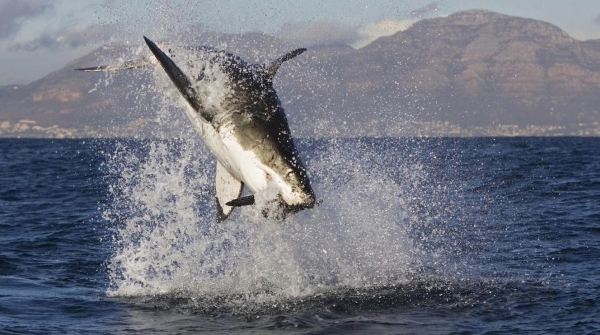Many lives could have been saved in the movie Jaws if only the town had an effective way of tracking the shark terrorizing their waters. Analysis of environmental DNA, or eDNA, is a revolutionary new technique that enables scientists to follow marine animals, no matter their size.
eDNA refers to the genetic material, such as feces or shedded skin, left behind by a living organism in their environment. Such materials previously had limited use, but, now, scientists can use gene sequencing techniques to extract and amplify DNA fragments from eDNA. This DNA can help to determine which species left the eDNA samples.
This technology is useful for efficiently tracking animals in waterways, enabling scientists to detect populations of a species in particular environments and their movements in an aquatic system. Being able to analyze eDNA also enables scientists to monitor the biodiversity of an entire region, helping them detect invasive species as well as monitor endangered and at-risk species that may be difficult to find. All of this information enables scientists to better understand how how humans impact biodiversity. eDNA also has many other unexpected uses.
“It can help us to discover where many species go in the winter-time, which is understudied” Jennifer Sunday, assistant professor in McGill’s Department of Biology, wrote in an email to The McGill Tribune. “Over time, it can help us to learn how fluid and variable species distributions and community compositions are across short and long time scales,”
Being able to see how the distribution of species changes over time as well as their movement patterns during the winter could further broaden our understanding of how changes in aquatic environments impact biodiversity.
eDNA offers certain advantages over traditional methods used to track marine life, chief of which is its non-invasive nature. Many traditional techniques for tracking marine life have harmful effects on animals. For example, fish tracked with electrofishing, which immobilizes them using electrical currents, frequently sustain injuries.
“eDNA has the potential to dramatically reduce the time and effort put into visual and capture surveys in the field, i.e. traditional methods,” Sunday said. “In doing so, it opens the door to much more frequent sampling over both space and time. This is key, especially [for] marine environments which are difficult to sample repeatedly [and] especially in the winter months. [It can] completely transform how we can observe biodiversity in the oceans.”
Therefore, eDNA can provide a more detailed picture of an ecosystem than traditional techniques. It provides a better picture because it is more accurate and it can detect more species than conventional methods.
“The future of this technology is, if organized well, a systematic, grounded in-truth observation network across Canada and hopefully across the world, to completely change the way that we observe changes in the oceans,” Sunday said.
Like all advances, though, the technology is not perfect.
“Much work needs to be done to overcome uncertainties in methodologies, including sources of bias from field to bench methods, and also to organize the efforts so that samples are comparable,” Sunday said.
Like many tracking systems, a major limit of this technology is that it only gives an indication of where the animal has been, not where it is currently. Animals can move long distances in the time it takes for eDNA to degrade. Additionally, eDNA particles can drift dramatically due to currents, reducing researchers’ ability to pinpoint the location of a particular animal.






